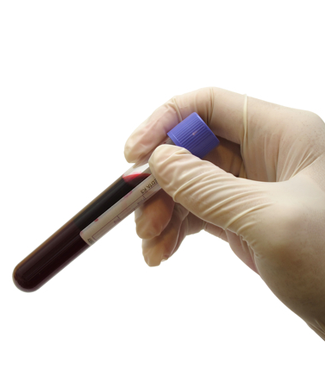Angiogenic Factors Linked to Esophageal Cancer Outcomes
A retrospective analysis found that high expression levels of two angiogenic factors were associated with poor prognosis in esophageal cancer.
Image © Eugene Sim/Shutterstock.com

A retrospective analysis found that high expression levels of two angiogenic factors-hepatocyte growth factor (HGF) and follistatin-were associated with poor prognosis in esophageal cancer.
Esophageal cancer outcomes remain relatively poor, and response rates to varying treatment regimens differ substantially among patients. “Recent studies indicated that factors that shape the tumor microenvironment might influence patients’ response and outcome,” wrote study authors led by Thomas Schmidt, MD, PhD, of the University of Heidelberg in Germany. Tumor angiogenesis in particular may play a role.
In this retrospective study, the researchers used an assay testing for nine angiogenic factors in 34 patients with esophageal squamous cell carcinoma (SCC) and 44 patients with adenocarcinoma of the esophagogastric junction (AEG). Results were published online ahead of print in BMC Cancer.
The study found that two factors, HGF and follistatin, were associated with patients’ prognosis (P = .037 and .036, respectively). The median survival of patients with low HGF was not reached in this analysis, and the median survival of those with higher levels was 20.3 months. For follistatin, patients with lower levels survived a median of 36.7 months, compared with 16 months for those with higher levels. The median survival for all patients in the study was 28.49 months, and there was no difference between SCC and AEG patients (P = .90). No association was seen between clinical response to therapy and circulating factor levels.
Follistatin levels were correlated with overall survival even after multivariate regression analysis including all the angiogenic factors found (P = .04). Both follistatin and another factor, angiopoietin-2, were higher in SCC samples than in AEG. No other major associations were seen; other factors studied included PECAM-1, leptin, G-CSF, PDGF-BB, IL-8, and VEGF.
“Based on these interesting obtained results we would recommend a prospective validation of this data in a patient cohort from multiple centers,” the study authors wrote. Trials should obtain blood samples before, during, and after therapy, to allow for better understanding of therapeutic effects on angiogenic factors.
“With this information it will be possible to provide a more complete picture of the tumor biology,” the authors concluded. “The aim will be to identify deregulated targetable pathways [such as] the HGF/MET pathway.”